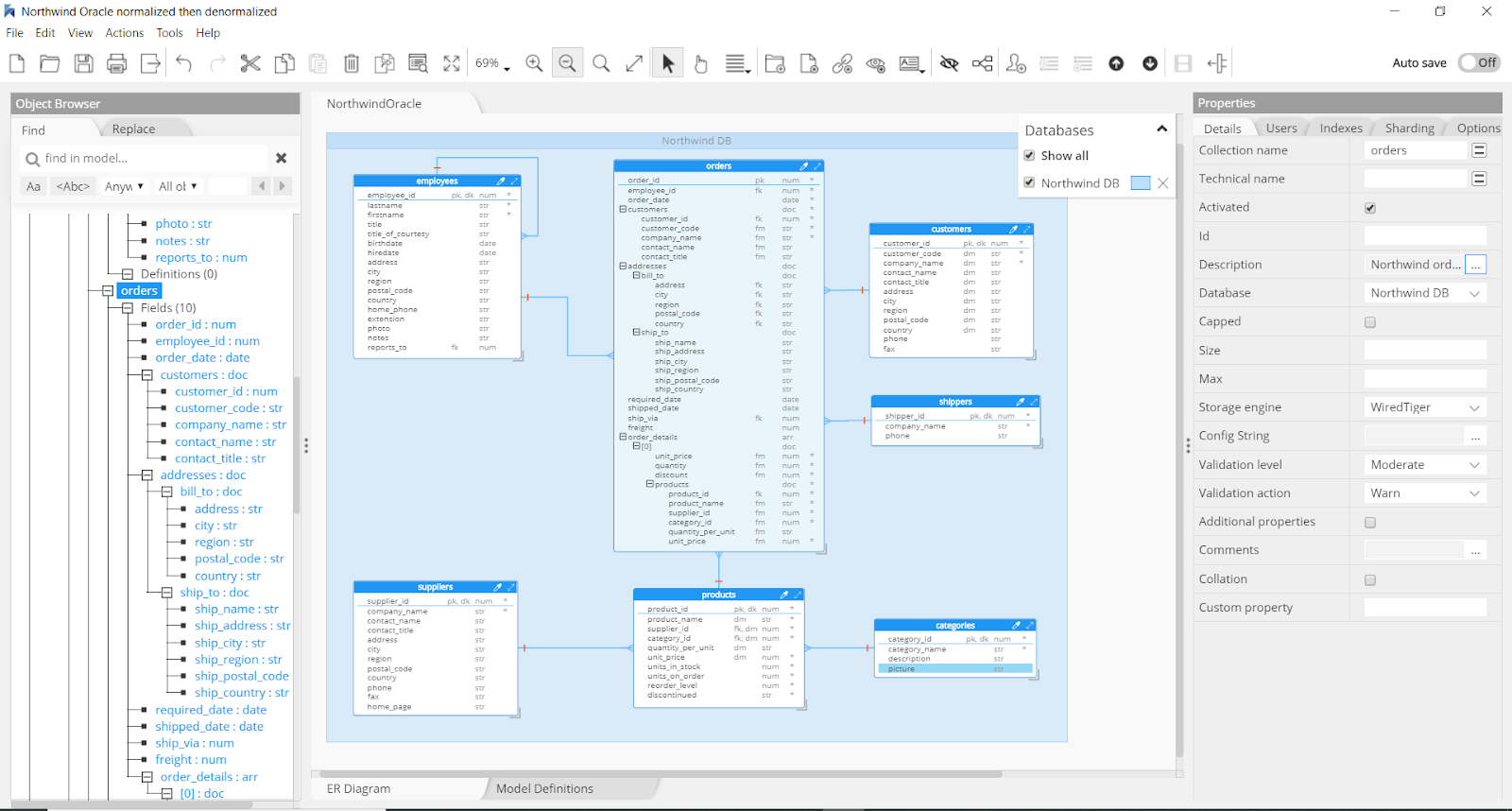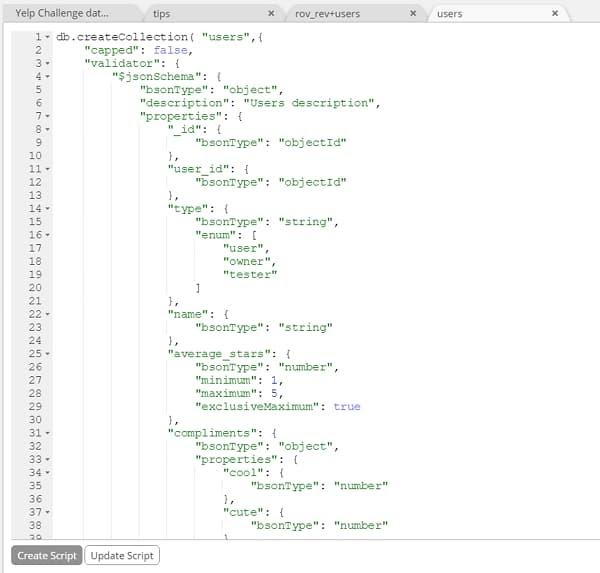Optimize Data Modeling and Schema Design with Hackolade and MongoDB
March 11, 2021 | Updated: December 1, 2025
Development teams are constantly searching for new ways to quickly enhance applications and satisfy the rapid progression of customer needs. The dynamic schema evolution in MongoDB enables such a reality through the power and flexibility of storing data in a JSON document format instead of in relational tables. As application complexity and scale increase in an enterprise environment, this flexible schema can be skillfully organized to harness the power of the solution, maximize developer productivity, and lower the total cost of ownership.
For large enterprises and government agencies, the key is to leverage the benefits of modern applications running on MongoDB Atlas while also ensuring proper data management and governance. This is where a data modeling tool designed specifically for MongoDB will greatly help.
Enter Hackolade. For decades, Entity-Relationship Diagrams (ERDs) have been used to visually represent the data structures of relational databases. But ERDs were originally designed for flat structures only. Hackolade, a MongoDB certified technology partner, has enhanced ERD capabilities to accommodate the representation of JSON hierarchical structures with nested objects and arrays. Hackolade is pioneering data modeling and schema design for NoSQL databases and REST APIs.
Why it Matters
A data model is an abstraction describing and documenting an organization’s information system. It is a collection of Entity-Relationship diagrams, descriptions, constraints, and metadata representing data structures:

A schema, on the other hand, is a “consumable” scope contract describing the layout or structure of a file, a transaction, or a database. It is an authoritative source for producers and consumers to agree on the structure being exchanged or accessed.
While data models are useful for humans to understand structure, schemas are the technical artifact necessary for systems to interact.
Hackolade provides both, allowing MongoDB customers to easily visualize the data model, intuitively create and enforce schema with MongoDB’s JSON Schema Validator, and iteratively change the schema as the applications evolve.

Customer Benefits
Increase data agility with forward-engineering
An ERD provides an easy-to-understand picture of your data. As a communication tool, it helps facilitate dialog between application stakeholders like business analysts, designers, architects, developers, and DBAs. With an ERD, you can evaluate different “what if” scenarios, identify the ideal way to denormalize data, and leverage the benefits of MongoDB Atlas technology. Simply apply a query-driven design of the schema after analyzing the access patterns of the application. You can then visualize and evaluate the impacts without writing a line of code—obviously, this is a more productive approach than coding first, then realizing that much needs to be rewritten to accommodate everyone’s needs.
The Hackolade software generates several artifacts such as: collection creation with validator script requiring no knowledge of JSON Schema syntax, sample JSON documents, Mongoose schemas, documentation in HTML, Markdown or PDF, plotter output of ERD pictures, document and index sizing estimates, and more. The process is easily integrated into a Jenkins CI/CD pipeline by invoking a flexible Command-Line Interface.
Ensure data quality and compliance through schema reverse-engineering
Deriving a data model from an existing MongoDB instance is not as easy as fetching a DDL from a relational database. Schemas must be inferred from a representative sample of documents in each collection. Hackolade has perfected its schema inference algorithms to accommodate the flexibility and polymorphism of JSON hierarchical structures. The derived models become a trusted source to feed data dictionaries and data governance suites.
Reverse-engineering helps ensure data quality and compliance, with the use of an automated Command-Line Interface process.
Facilitate application modernization with the denormalization of legacy data structures
Hackolade can import a variety of structures from relational DDLs, logical data models in XSD format, JSON documents and schemas, and Excel templates. To leverage the benefits of MongoDB, these structures should evolve to embed information where applicable and avoid slow JOINs. This should not be done blindly, but based on a proper analysis of the application access patterns in the context of data volume estimates and relationship cardinality.
Hackolade provides a handy feature to quickly evolve a relational data model towards a denormalized schema, thereby leveraging the benefits of MongoDB’s document model and facilitating modernization. The process easily hooks into the forward-engineering process described above, generating pictures, scripts, and documentation.
Implement continuous evolution and data management
The lifecycle of modernized applications does not stop after the initial data migration step. Applications must be successfully operated, and will continue to evolve, resulting in likely schema changes.
Hackolade is designed to facilitate agile development approaches and the full lifecycle of modern software. It provides the necessary tooling to design and manage data models and schemas for successful application modernization on MongoDB Atlas.
Learn how to maximize developer productivity and lower total cost of ownership using data modeling with Hackolade, and the MongoDB University data modeling advanced course.
Download the joint solution brief: MongoDB and Hackolade: Visual Data Modeling for MongoDB Schemas.